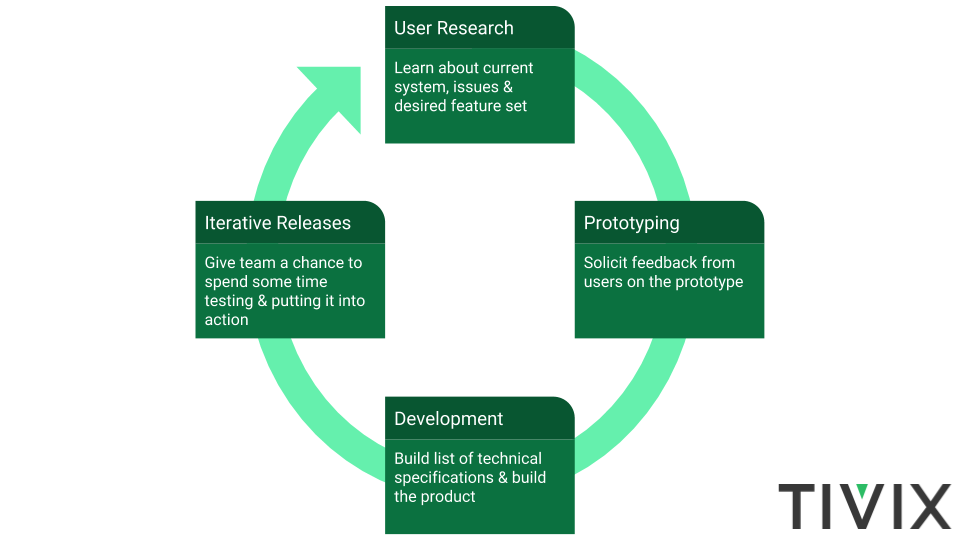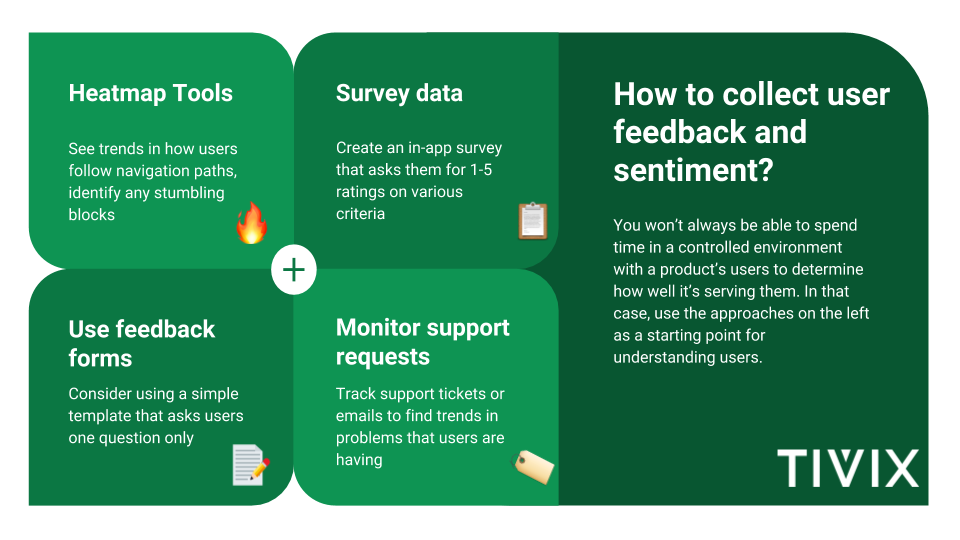

Updated January 2, 2025
Software products are rarely perfect on the first release. Rather, frequent iterations incorporating rounds of user feedback and sentiment are required to create a product that succeeds and meets real-world user needs.
Product development isn’t simply one phase of the process at Tivix. It’s a step that we return to over and over, even long after the initial product launch. We have found that frequent iteration – or continually improving a product – isn’t just helpful but is essential to building a successful product.
Here’s a look at how we use iteration in the process of building a successful digital product for a client.
Looking for a Mobile App Development agency?
Compare our list of top Mobile App Development companies near you
In one recent case, we worked with an engineering company to build an app to streamline its asset tracking and inventory system. Before devising a solution, we spent time listening to feedback, learning how the company used its current system and the solutions the team wanted in a new system.

We began prototyping and solicited feedback from users on the prototype. Once we felt confident with that, we built a list of technical specifications and began building the new product. After it was complete, we gave the team a chance to spend some time putting it into action.
We came back to the team three months later to see how the new solution we built was working. The company told us that it was much better than the previous solution – but it still wasn’t ideal.
So, our development team traveled back to the company’s headquarters to try it out for ourselves. We asked the employees who actively used the product on a day-to-day basis to show us how they used it, and finally, we sat down to try out the process firsthand.
Immediately, we could see the flaws in the system and knew we needed to do better. We tried out every test case, took notes, and made ourselves available to listen to users’ suggestions and concerns about the product and the problems it was intended to solve.
Finally, we went back into development mode, with a much clearer outlook of the features that needed to be included in the final solution.
We continued to iterate, listening to user feedback along the way, and ultimately, we built a product that was intuitive to use for every potential situation that might come up.
In software engineering, building a wish list of features isn’t enough to tell you how the tool will actually operate. In order to reach a valuable solution, it’s crucial to spend time listening to the people who will be involved in the process on a day-to-day basis, putting yourself in their shoes, and then iterating on a continual basis until you reach the solution your users want.
This means that the product isn’t finished once it gets into your users’ hands.
After you’ve launched, it’s time to closely follow how those users interact with the product and identify any trouble spots they find once they spend some time with it. As hard as you might try to conduct user research during the prototyping and build process, it’s never going to replace the need for genuine user feedback.
You won’t always have the option of spending time in a controlled environment with the product’s users to determine how well it’s serving them. In that case, how can you tell what your users think about it?

Here are a few ideas for collecting feedback.
Heatmap tools are available for both desktop and mobile applications and can give you real-time insights on how users navigate your digital interface.
You’ll be able to see data trends that measure how quickly users follow navigation paths and whether any stumbling blocks are getting in their way.
Use this data to make improvements to your user interface if needed.
It’s also helpful to simply ask users how they feel about your product.
Create an in-app survey that asks them for ratings from 1 to 5 on various criteria such as navigability, speed, design, etc., as well as for any custom feedback about new features or improvements they’d like to see.
Make it as seamless as possible for users to offer feedback on their experience with your app, no matter where they are in the app.
Consider using a simple template that asks them one question, measuring customer satisfaction, goal completion, or one of several other key metrics.
Closely track customer support tickets or emails to track trends in problems users have with your product.
Have customers identified a bug in the system, or are they getting stumped by a non-intuitive user interface?
Map out priorities for updates based on the trends you see in customer feedback.
Once you’ve gotten a clear picture of how users receive your digital product, it’s time to iterate the product for optimization around the key metrics you’ve identified.
Your next release may still not be 100% on the mark, but it will be much closer than your first attempt, thanks to the wealth of genuine user data you’ve collected to support you on your journey.
Keep striving to build a product your users will love; listen to them along the way, and eventually, you’ll get there.


